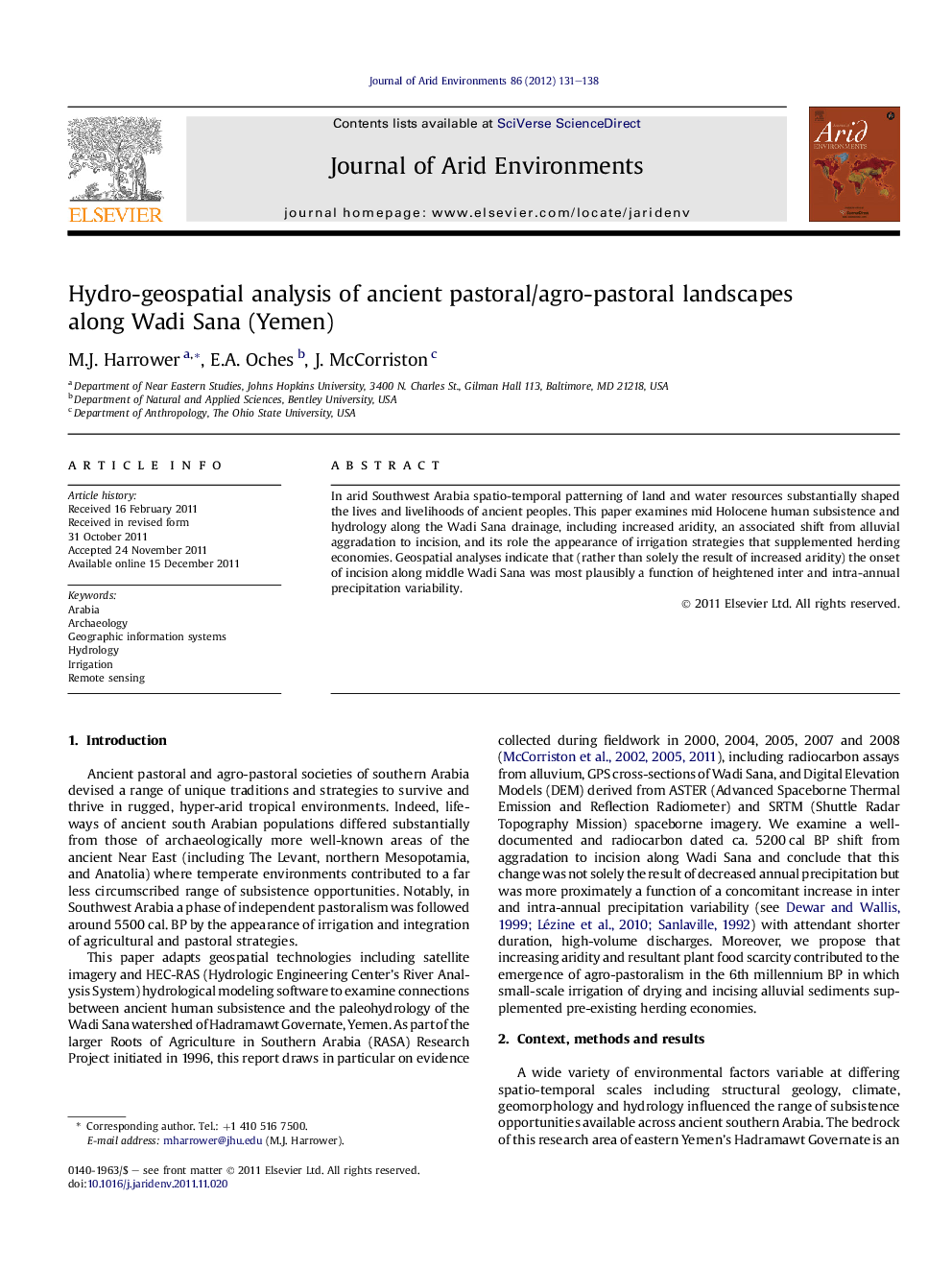| Article ID | Journal | Published Year | Pages | File Type |
|---|---|---|---|---|
| 4393254 | Journal of Arid Environments | 2012 | 8 Pages |
In arid Southwest Arabia spatio-temporal patterning of land and water resources substantially shaped the lives and livelihoods of ancient peoples. This paper examines mid Holocene human subsistence and hydrology along the Wadi Sana drainage, including increased aridity, an associated shift from alluvial aggradation to incision, and its role the appearance of irrigation strategies that supplemented herding economies. Geospatial analyses indicate that (rather than solely the result of increased aridity) the onset of incision along middle Wadi Sana was most plausibly a function of heightened inter and intra-annual precipitation variability.
► We used geospatial technologies to analyze ancient human-environment relationships. ► Hydrology affected availability of areas for gathering, grazing and irrigation. ► We attribute an aggradation-incision shift to increased precipitation variability.
